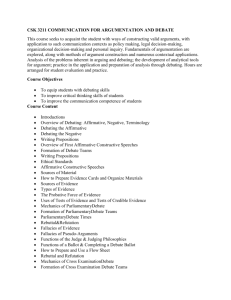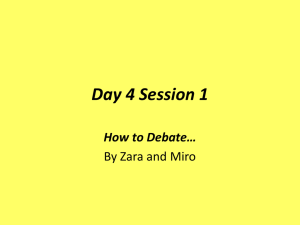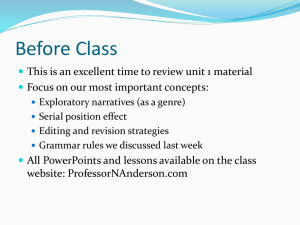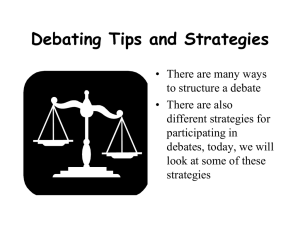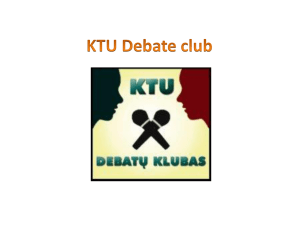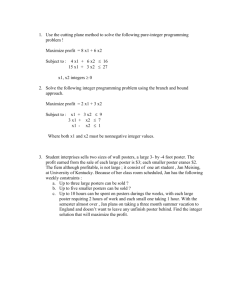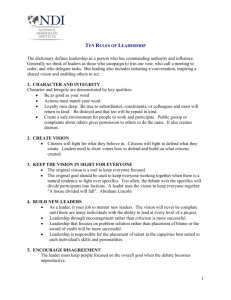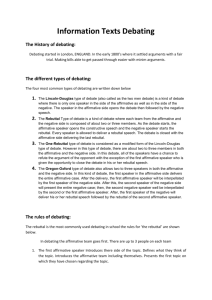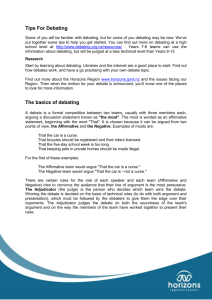File - Stacie Proctor professional portfolio
advertisement
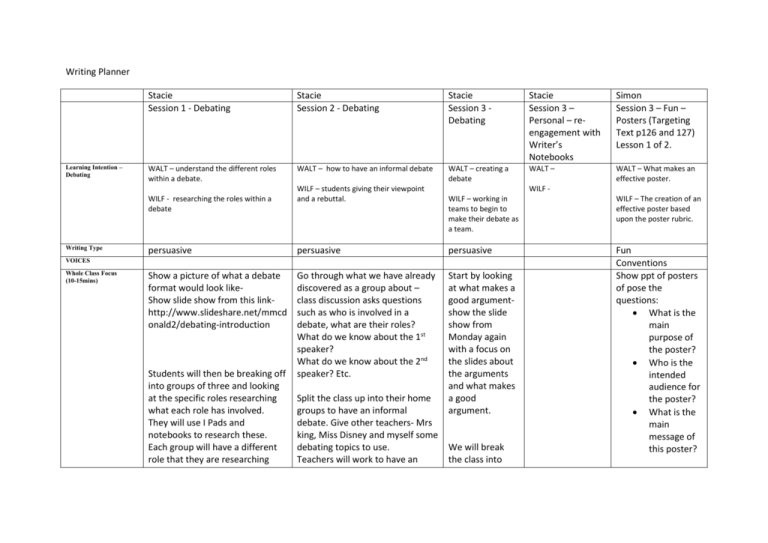
Writing Planner Learning Intention – Debating Stacie Session 1 - Debating Stacie Session 2 - Debating Stacie Session 3 Debating Stacie Session 3 – Personal – reengagement with Writer’s Notebooks Simon Session 3 – Fun – Posters (Targeting Text p126 and 127) Lesson 1 of 2. WALT – understand the different roles within a debate. WALT – how to have an informal debate WALT – creating a debate WALT – WALT – What makes an effective poster. WILF - researching the roles within a debate Writing Type WILF – students giving their viewpoint and a rebuttal. WILF WILF – working in teams to begin to make their debate as a team. WILF – The creation of an effective poster based upon the poster rubric. Fun Conventions Show ppt of posters of pose the questions: What is the main purpose of the poster? Who is the intended audience for the poster? What is the main message of this poster? persuasive persuasive persuasive Show a picture of what a debate format would look likeShow slide show from this linkhttp://www.slideshare.net/mmcd onald2/debating-introduction Go through what we have already discovered as a group about – class discussion asks questions such as who is involved in a debate, what are their roles? What do we know about the 1st speaker? What do we know about the 2nd speaker? Etc. Start by looking at what makes a good argumentshow the slide show from Monday again with a focus on the slides about the arguments and what makes a good argument. VOICES Whole Class Focus (10-15mins) Students will then be breaking off into groups of three and looking at the specific roles researching what each role has involved. They will use I Pads and notebooks to research these. Each group will have a different role that they are researching Split the class up into their home groups to have an informal debate. Give other teachers- Mrs king, Miss Disney and myself some debating topics to use. Teachers will work to have an We will break the class into e.g. group one- 1st speakers group 2- 2nd speaker etc. informal debate with their group. - Split your group of students in 2 sides. - Give an affirmative and a negative side then. - Pose the problem to the group - The groups have 5 mins to discuss their opinions and what points they will give - Then the group come back together and present their negative or affirmative side. - The other team gets a chance to rebut if they feel they can. groups 0f 6 for the debating teams For each debate topic we will have a negative and affirmative side- students will then work to decide who is 1st, 2nd or 3rd speaker. Work in home groups on informal debates. Students will begin to research their side of the topic either negative or affirmative. - Scaffolding/ Planning (3-5mins) Independent Writing Activity (25 mins) Includes: USSW (5-10mins) & Roving Conferences (5 mins) Focus Students Work in groups to define the role in the debate that they were given. Affirmative or negative - 1st speaker - 2nd speaker - 3rd speaker - Chair person - Audience - Timekeeper - Judges Anyone having difficulty researching the roles help them Walk around and help any7 groups Explain that the children will be making their own A3 posters. Discuss some ideas that they could use in their poster. Explain that over two sessions they will create and then rate their posters in groups of 5. Do draft first on scrap paper then published copy. Show rubric for assessing posters. Show rubric to allow students to mull over some ideas. Work on posters. Those having difficulty with ideas start the search and guide them in the right direction. Editing Focus (5 mins) Sharing (5-10mins) Have students share some of the information they have found out about each of the roles in a debate. We will come back as a group and share what everyone thinks worked well, did they enjoy the informal debate were there any good rebuttals given? that are struggling to get started to start them off. Reflect as a group on the task, were students able to start to find some good information? Share some of this. Show some of the work achieved so far.
